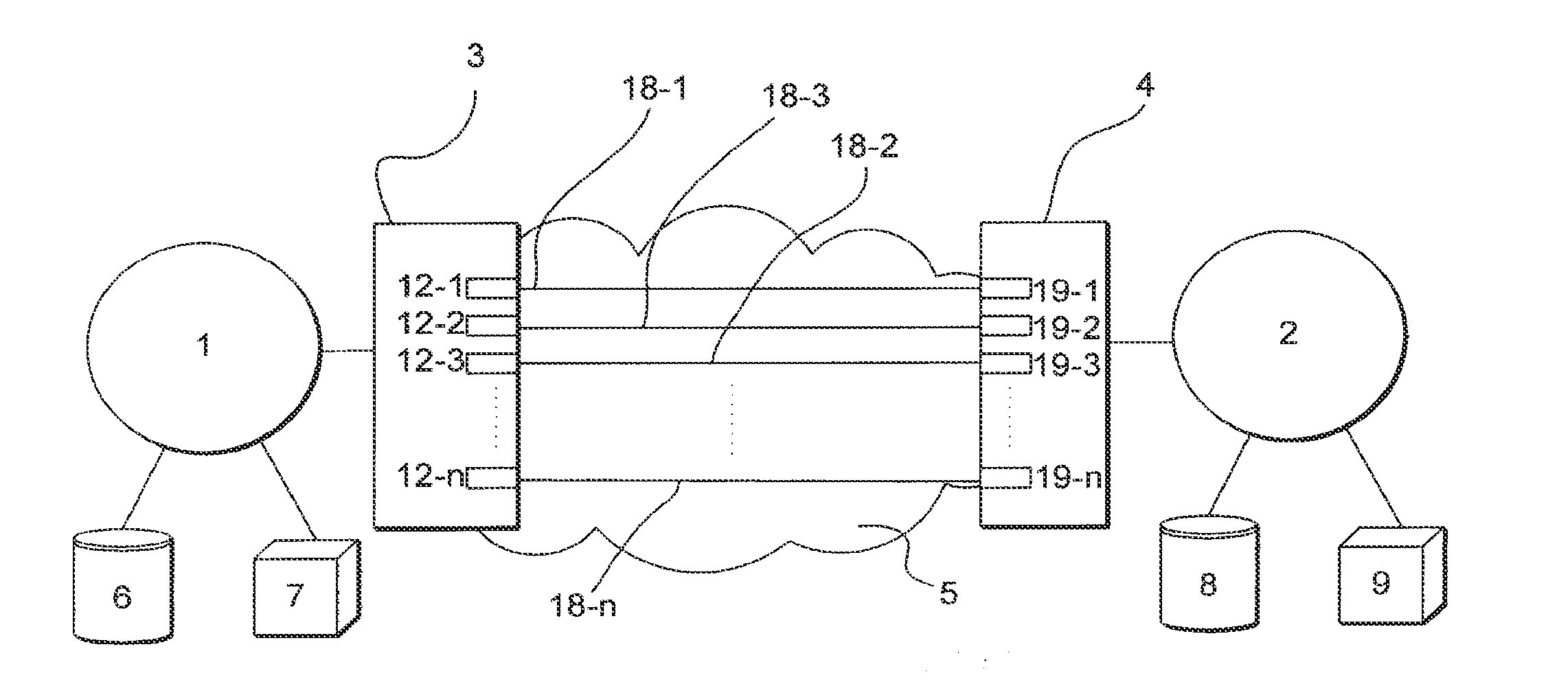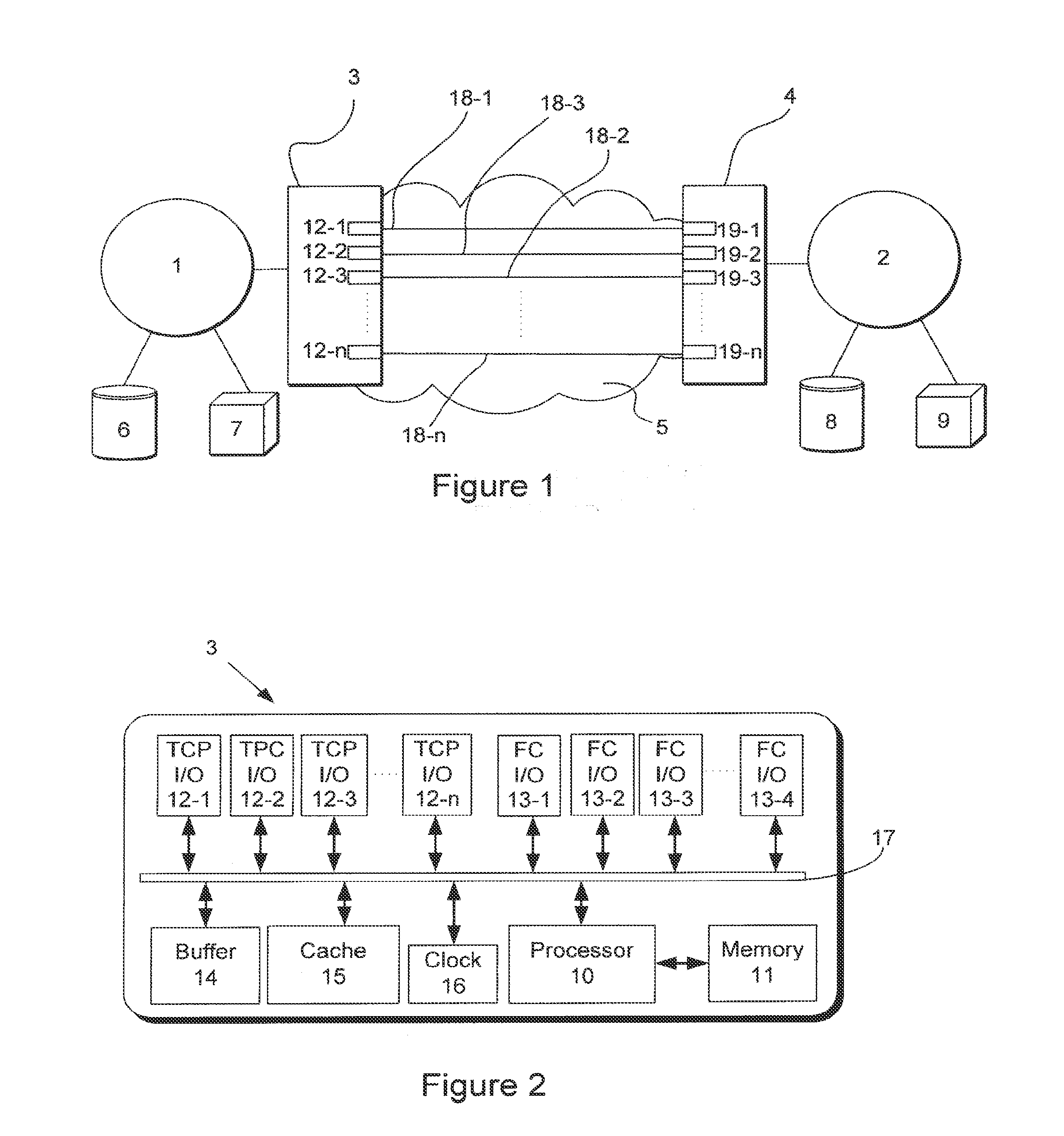Data transfer
a data transfer and data technology, applied in data switching networks, instruments, frequency-division multiplexes, etc., can solve the problems of ineffective utilization of available bandwidth, error recovery, and limited data transfer rate between network nodes using conventional methods, so as to reduce delays and improve data transfer rate
- Summary
- Abstract
- Description
- Claims
- Application Information
AI Technical Summary
Benefits of technology
Problems solved by technology
Method used
Image
Examples
Embodiment Construction
[0031]FIG. 1 depicts a system according to an embodiment of the invention. In this particular example, the system includes a local Storage Area Network (SAN) 1, a remote SAN 2. The remote SAN 2 is arranged to store back-up data from clients, servers and / or local data storage in the local SAN 1.
[0032]Two bridges 3, 4, associated with the local SAN 1 and remote SAN 2 respectively, are connected via a network 5. In this particular example, the network 5 is an IP network and the bridges 3 and 4 can communicate with each other using the Transmission Channel Protocol (TCP). The communication links between the bridges 3, 4 may include any number of intermediary routers and / or other network elements. Other devices 6, 7 within the local SAN 1 can communicate with devices 8 and 9 in the remote SAN 2 using the bridging system formed by the bridges 3,4 and network 5.
[0033]FIG. 2 is a block diagram of the local bridge 3. The bridge 3 comprises a processor 10, which controls the operation of the ...
PUM
 Login to View More
Login to View More Abstract
Description
Claims
Application Information
 Login to View More
Login to View More - R&D
- Intellectual Property
- Life Sciences
- Materials
- Tech Scout
- Unparalleled Data Quality
- Higher Quality Content
- 60% Fewer Hallucinations
Browse by: Latest US Patents, China's latest patents, Technical Efficacy Thesaurus, Application Domain, Technology Topic, Popular Technical Reports.
© 2025 PatSnap. All rights reserved.Legal|Privacy policy|Modern Slavery Act Transparency Statement|Sitemap|About US| Contact US: help@patsnap.com



